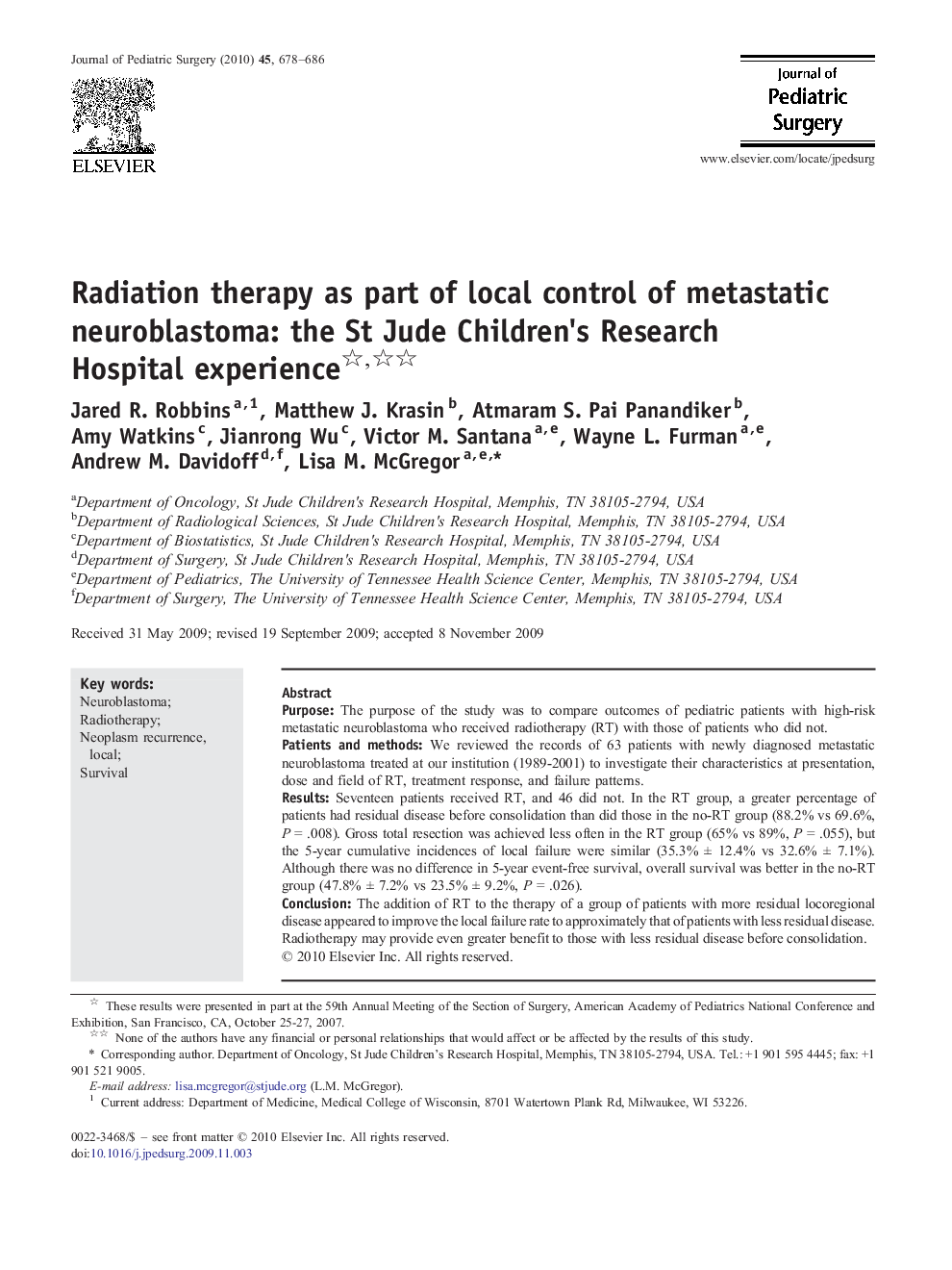| Article ID | Journal | Published Year | Pages | File Type |
|---|---|---|---|---|
| 4158430 | Journal of Pediatric Surgery | 2010 | 9 Pages |
PurposeThe purpose of the study was to compare outcomes of pediatric patients with high-risk metastatic neuroblastoma who received radiotherapy (RT) with those of patients who did not.Patients and methodsWe reviewed the records of 63 patients with newly diagnosed metastatic neuroblastoma treated at our institution (1989-2001) to investigate their characteristics at presentation, dose and field of RT, treatment response, and failure patterns.ResultsSeventeen patients received RT, and 46 did not. In the RT group, a greater percentage of patients had residual disease before consolidation than did those in the no-RT group (88.2% vs 69.6%, P = .008). Gross total resection was achieved less often in the RT group (65% vs 89%, P = .055), but the 5-year cumulative incidences of local failure were similar (35.3% ± 12.4% vs 32.6% ± 7.1%). Although there was no difference in 5-year event-free survival, overall survival was better in the no-RT group (47.8% ± 7.2% vs 23.5% ± 9.2%, P = .026).ConclusionThe addition of RT to the therapy of a group of patients with more residual locoregional disease appeared to improve the local failure rate to approximately that of patients with less residual disease. Radiotherapy may provide even greater benefit to those with less residual disease before consolidation.
